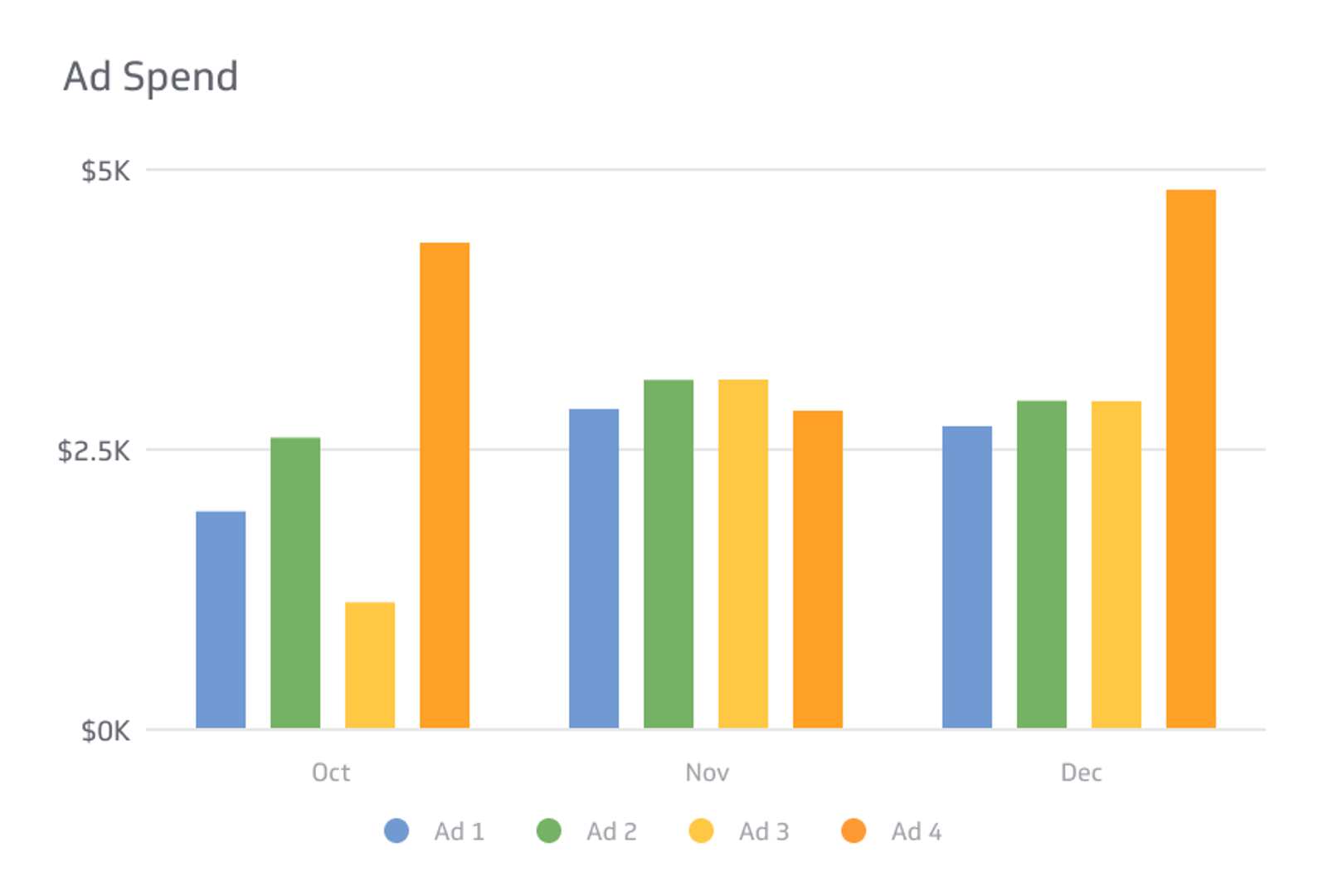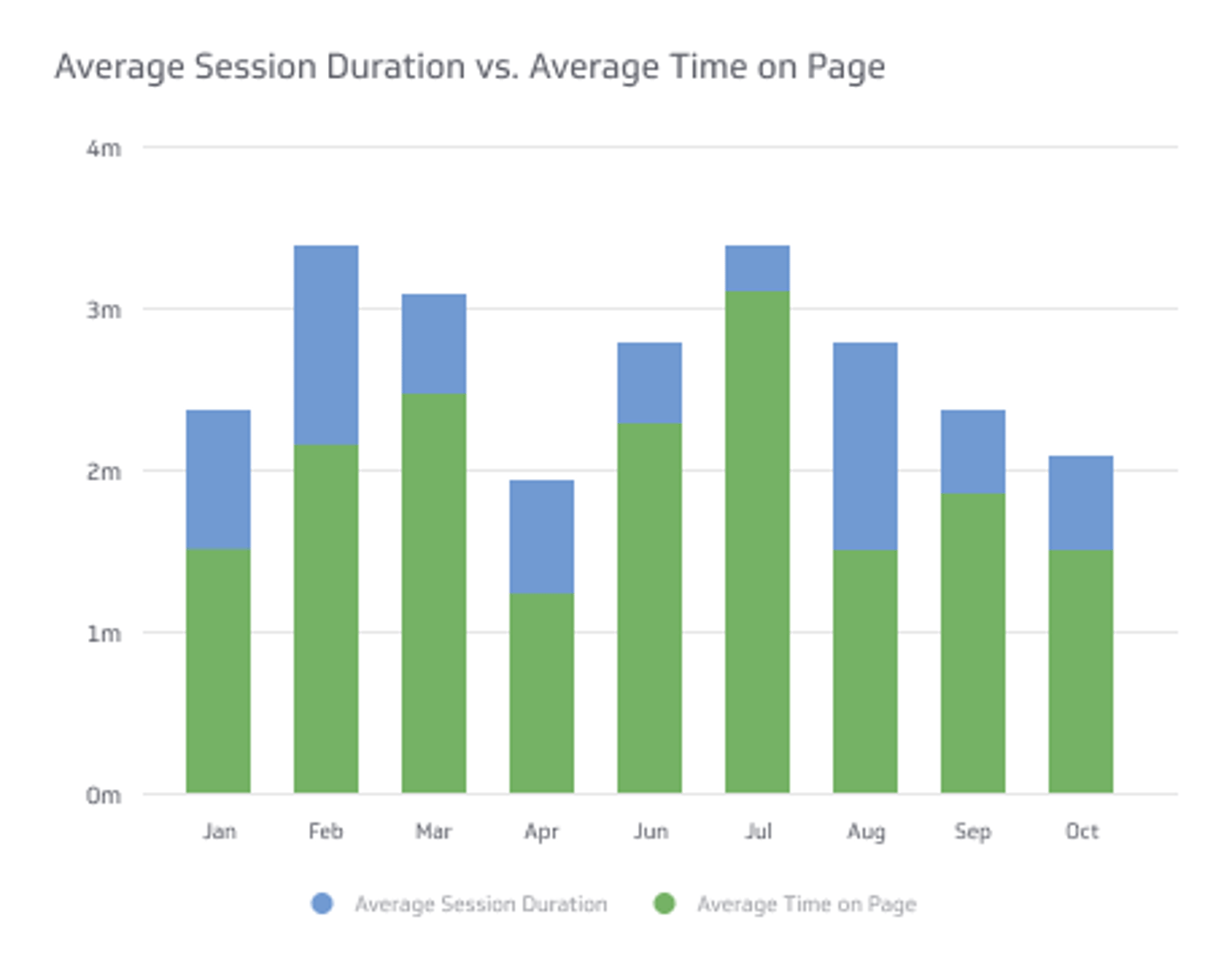Ad Spend
Ad spend, or advertising spend, refers to the amount of money that a business invests in advertising to promote its products or services.
Track all your Digital Marketing KPIs in one place
Sign up for free and start making decisions for your business with confidence.

As businesses compete for the attention of their target audience, advertising has become a crucial component of marketing strategies. One important term that businesses need to understand is ad spend. In this article, we will explore ad spend, how to calculate it, and how businesses can use it to their advantage.
What is Advertising Spend?
Ad spend, or advertising spend, refers to the amount of money that a business invests in advertising to promote its products or services. This investment can be made across different channels, including social media, TV, print media, search engines, and display ads. Ad spend is a critical digital marketing metric that businesses use to measure the effectiveness of their advertising campaigns and to make informed decisions on future investments.
The amount spent on advertising is crucial to a company's overall marketing budget. Businesses look to boost their brand visibility, produce leads, and eventually raise revenue by dedicating a percentage of their budget to advertising. Ad spending is, therefore, a crucial component of a company's growth plan.
Why Is Ad Spend Important?
One of the primary reasons ad spend is essential for businesses is its impact on revenue. Advertising campaigns can generate leads and sales, allowing businesses to increase their revenue and profits. For example, a direct response advertising campaign with a clear call-to-action can encourage users to make a purchase, growing the business's revenue.
Ad spend also plays a crucial role in a business's growth strategy. Investing in advertising can help businesses reach a wider audience and increase their market share. This is particularly important for companies looking to expand into new markets or launch new products.
In addition to its impact on revenue and growth, ad spend is essential for building brand recognition. Advertising campaigns can create a positive image of the brand in the minds of consumers, increasing brand awareness and recognition. Businesses looking to establish themselves in a competitive market can benefit from this.
For example, a business launching a new product can use advertising to generate interest and awareness, build brand recognition, and establish a market foothold. Over time, this can lead to increased market share and revenue growth.
Moreover, ad spend is also critical for businesses looking to maintain their market position. Businesses can reinforce their brand image and maintain their market share by continuously investing in advertising. In industries with high competition, businesses need to remain top-of-mind with consumers.
How Is Ad Spend Measured?
Ad spend is measured using a variety of metrics that depend on the ad platform and the type of campaign being run. Here are some common ways to measure your ad spend:
CPM (Cost per Thousand Impressions)
CPM is a metric used to measure the cost of advertising per thousand impressions. It's commonly used in display advertising, where advertisers pay for the times their ad is displayed to users, regardless of whether the user interacts with it. For example, if an advertiser pays $10 for 1,000 ad impressions, the CPM is $10.
CPC (Cost per Click)
The cost per click (CPC) is used to assess the price of advertising. When an advertiser pays for each click on their ad, they frequently utilize this technique in search advertising. The entire cost of advertising, in this case, would be $100, and the CPC would be $1 if an advertiser paid $1 for each click on their ad and 100 users did the same.
Cpl (Cost per Lead)
The cost per lead (CPL) statistic is used to calculate the cost of advertising. It is frequently employed in lead generation efforts, where advertisers pay for every user who submits their contact information or completes a particular action, like completing a form or subscribing to a newsletter. The overall cost of advertising, for instance, would be $500, and the CPL would be $10 if an advertiser paid $10 for each lead and 50 users provided their contact information.
CPA (Cost per Action)
CPA is a metric used to calculate the cost of advertising for each distinct user action, like a purchase or app download. It is widely used in performance-based advertising, in which clients only pay for services deemed essential to their enterprise. The entire cost of advertising is $100, and the CPA is $5, for instance, if an advertiser pays $5 for each purchase made by a user who clicked on their ad and 20 users complete the transaction.
Cps (Cost per Sale)
The cost of advertising per sale (CPS) is quantified using this metric. It is used in e-commerce advertising, where marketers are paid for each sale resulting from an ad. For instance, the entire cost of advertising is $100, and the CPS is 10% if an advertiser pays a commission of 10% on each sale brought about by their advertisement and the total sales brought about by the advertisement are $1,000.
CPI (Cost per Install)
CPI is a metric used to measure the cost of advertising per app install. It's commonly used in mobile app advertising, where advertisers pay for each app install generated by their ad. For example, if an advertiser pays $1 for each app install generated by their ad, and 500 users install the app, the total cost of advertising is $500, and the CPI is $1.
What Is a Good Level of Ad Spend?
Determining a good level of ad spend for a business depends on several factors, including the industries involved, target audience, competition, and advertising goals. A business should always consider its ad budget in the context of its overall financial plan and goals.
A good rule of thumb for businesses just starting with advertising is to allocate a percentage of their revenue to advertising, usually around 5-10%. However, this can vary depending on industies and the competition. For example, a highly competitive industry such as retail may require a higher spend to stay ahead of competitors.
It's important to note that ad spend should not be seen as a fixed expense. It's crucial to regularly review and adjust the spend based on campaign performance and goals. If a campaign is not performing well, changing the ad spend or the targeting may be necessary to improve performance. On the other hand, if a campaign is performing well, increasing the ad spend may lead to even better results.
Questions Marketers Can Use When Determining Their Ad Spend Budget
Here are some questions for marketers to ask themselves when determining their ad spend budget.
What are my business goals?
Before allocating an ad spend budget, it's crucial to establish what the business hopes to achieve through advertising. For example, the goal may be to increase sales, improve brand recognition, or drive website traffic. Understanding the business goals will help determine the most appropriate ad channels and tactics.
Which regions are more relevant to my target?
Marketers should consider the geography of their target audience when allocating their ad spend budget. Depending on the business, targeting specific regions or countries where the product or service is most in demand may make sense.
Is the creative concept relevant to my target audience?
The creative concept of an ad can have a significant impact on its success. It's essential to ensure your topics are relevant to the target audience and resonate with them. This will help to maximize the effectiveness of your ad spend.
What should the pace of the campaign be? When should I launch it?
Marketers should determine the pace of their ad campaign by considering factors such as their goals, budget, and length of the campaign. For example, a business with a large ad budget may choose to run its ads at a higher frequency over a shorter period of time, while a business with a smaller budget may choose to spread its ads out over a longer period at a lower frequency.
What channels should I use?
There are many different ad channels to choose from, including social media, search engines, display ads, and more. Marketers should consider which channels are most appropriate for their target audience and advertising goals when allocating their ad spend budget.
How much more can I afford to spend?
Ultimately, the amount a business can afford to spend on advertising will be determined by its budget. It's essential to allocate a realistic ad spend that aligns with the business's financial plan and goals.
Upgrade your marketing strategy today
The competition in today's business world is fierce, and ad spend has become essential to any business's marketing strategy. Ad spend is vital to achieving marketing goals. Measuring your spend is crucial for understanding campaign effectiveness, and there are various ways to measure it.
Marketers should regularly review and adjust their ad spend budget to ensure it aligns with business goals and constraints. By staying up-to-date with ad spend trends and strategies, businesses can effectively allocate their budget and remain competitive.
Related Metrics & KPIs



